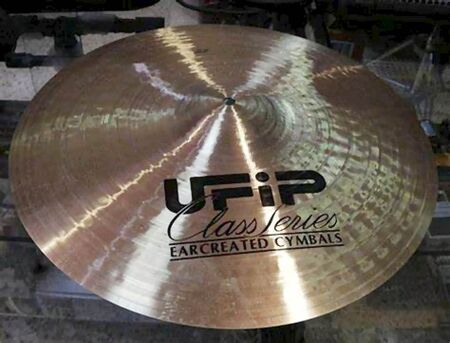Difference between revisions of "UFIP"
m |
m |
||
| Line 1: | Line 1: | ||
UFIP - Unione Fabbricanti Italiani Piatti - (Italian Cymbal Manufacturers Union) is an Italian musical instrument manufacturing company based in Pistoia, Tuscany, Italy. | UFIP - Unione Fabbricanti Italiani Piatti - (Italian Cymbal Manufacturers Union) is an Italian musical instrument manufacturing company based in Pistoia, Tuscany, Italy. | ||
| − | [[File:UFIP. | + | [[File:UFIP.jpg|thumb|right|450px]] |
<b>More coming soon!</b> | <b>More coming soon!</b> | ||
Revision as of 15:23, 3 November 2023
UFIP - Unione Fabbricanti Italiani Piatti - (Italian Cymbal Manufacturers Union) is an Italian musical instrument manufacturing company based in Pistoia, Tuscany, Italy.
More coming soon!
Why is UFIP important and why are they different?
UFIP is the second oldest cymbal company (est. 1931) to produce cymbals from B20 bronze.
They are unique because they come from the Italian culture of church bell making or “bronze casters” as they call themselves. They use traditional techniques that have been practiced for several hundred if not a thousand years on casting bronze church bells.
Originally, their cymbals were gravity cast, at some point we believe possibly in the mid-1970s, UFIP developed the “rotocasting” technique where molten bronze is poured into a spinning mold that is made in the shape of a cymbal: this includes the bell and the “bow” or curve of the cymbal.
This process produces a dense and consistent alloy without inclusions, porosity or defects. This process also creates a different sounding cymbal because it is not hot rolled or cold rolled at any point but it is hammered and lathed (most models).
For several decades, UFIP was the only other cymbal company (besides Paiste) to make their own gongs.
What is centrifugal casting and why is it better?
The process involves using a centrifugal force (high-speed rotation action) to exert pressure on the molten metal, and it is poured from an external source into a spinning die. The centrifugal force acts to distribute the molten metal in the spinning die at pressures close to 100 times the force of gravity. The mold rotates until the whole casting solidifies. Because of the high G-forces involved in this casting method, the less dense materials, including impurities, are forced to go to the inside diameter periphery of the part, which is subsequently removed by machining, and defects related to gas and porosity are reduced.









